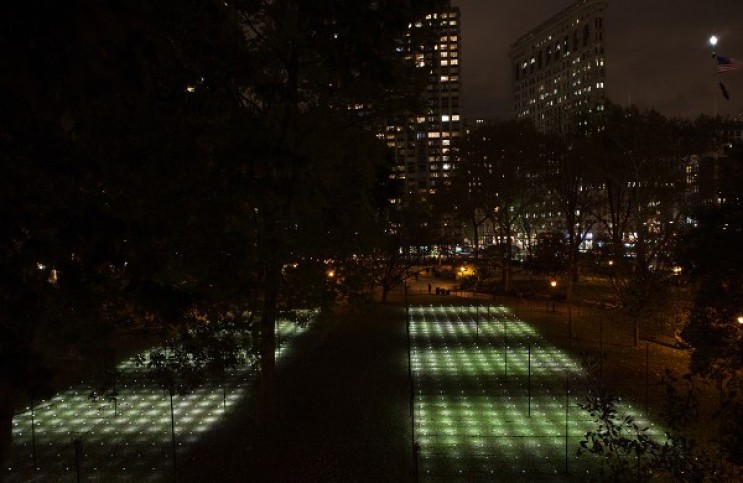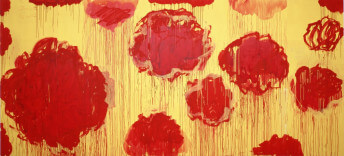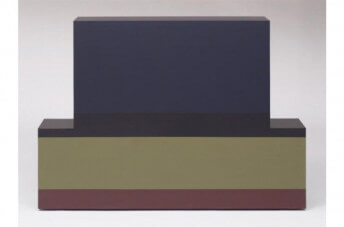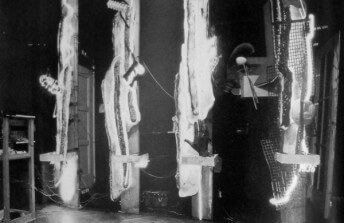How Erwin Redl Sheds Some Light on the World with LED Installations
Dec 1, 2017
A major outdoor installation by Erwin Redl recently opened in Madison Square Park, in Midtown Manhattan. The site-specific sculpture is called Whiteout. It consists of 900 LED lights suspended from steel cables in twin, side-by-side, rectangular arrays. The cables are free to move in the breeze, causing the lights to occasionally sway in swarm-like waves in concert with the trees around them. Meanwhile, a computer program sends programmed pulses through the arrays, simulating a phenomenon similar to the undulating lights of a landing strip. In the day time, though the lights are still visible, the carefully laid out rows of wires and poles give Whiteout an architectonic tone, like a tree lot the day after Christmas, with all the trees gone. But when darkness falls, the work metamorphosizes. Fields of glowing orbs assert their mystical presence. Gesticulating, cosmic lights hover inches above the grass, like the tentacles of a living being manifested from some metaphysical realm to occupy the beating heart of the city. The soft, undulating radiance beckons to passersby to walk among it, but this part of the park is cordoned off this time of year to protect the landscaping. Viewers must look from afar, and wonder about what they are seeing; hence the title, Whiteout. This installation marks yet another return of this Austrian-born, Ohio-based artist to New York City. Smaller works by Redl have appeared in dozens of exhibitions around town in the past 20 years, and his now iconic Matrix VI covered the three-level facade of the Whitney Museum in three concentric curtains of LED lights for the 2002 Whitney Biennial. That piece made headlines, creating a mystifying zone of perception that was as corporeal as it was enigmatic. Whiteout, though inherently different and more subtle, accomplishes a similar effect, and in some ways raises the bar.
A Totalitarian Art
You might assume Erwin Redl is inspired by some of the other abstract artists who have, over the decades, used light as a medium. But it is interesting to note Redl does not cite such artists amongst his influences. Rather, he lists the minimal composers John Cage, Steve Reich and Iannis Xenakis. If you know their work, this is reasonable. Especially with large-scale works like Whiteout, Redl accomplishes something close to what their music accomplishes. The work disrupts the spectatorial hierarchy. Rather than allowing itself to only be contemplated in pieces, it overwhelms the spectator in myriad ways. Whiteout participates in the aesthetic experience through its kinetic presence, and by its sheer size it dominates the field of vision. A minimalist symphony does something similar: it forbids analyses of individual notes or melodies because the flow is continuous; more is always coming. It demands spectators yield to its fullness in order to comprehend it.
There is also another way in which the work of Redl is similar to the work of the composers who influence him. Their music is often described asrepetitive, dramatic, andsometimes harsh. It can even seem antagonistic, as if the point is to make people feel anxious and intimidated. It is simultaneously beloved because it focuses the audience, elevating their mindset to a transcendent state. Similarly, the work Redl creates has repetitive, dramatic, even harsh qualities. It demands focus, and yet cannot be focused on because it is too vast and often too intense. You have no choice but to interact with the peripheral ramifications of the work—to bask in the glow, contemplate the relationship between the light and the dark, or admire the transformed surroundings. You feel something rather than think something. As with a minimalist musical composition, work like this can become an irritant for some spectators. For others it is an instigator of calm and peace. But for everyone it is demanding. It is bigger than whatever supposedly holds it. It imposes itself completely, requiring the attention of everyone in its presence. It is totalitarian art.
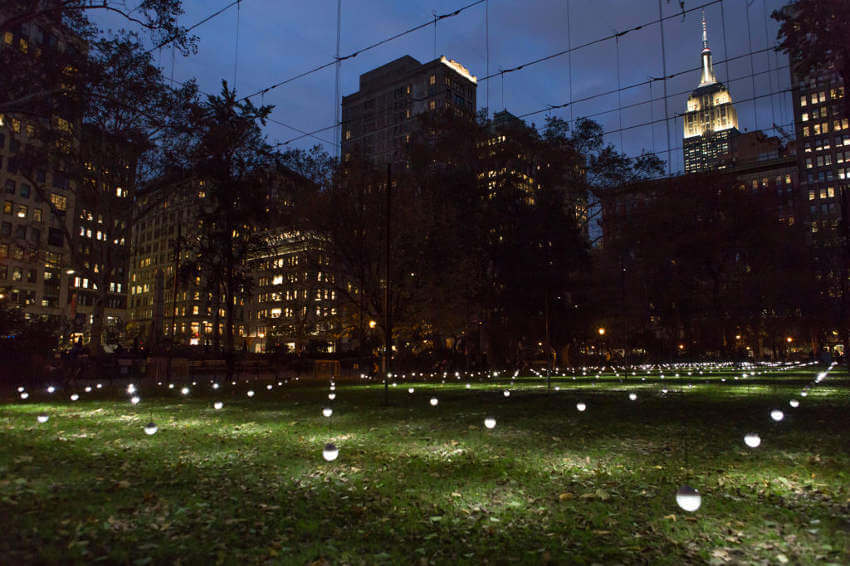 Erwin Redl - Whiteout, 2017, Madison Square Park, New York, NY, USA. Steel, animated white LEDs, stainless steel cable, low voltage insulated wire, two sections: each 12 x 40 x 180 feet; overall: 12 x 110 x 180 feet. Collection of the artist. © Erwin Redl. Photos: Rashmi Gill
Erwin Redl - Whiteout, 2017, Madison Square Park, New York, NY, USA. Steel, animated white LEDs, stainless steel cable, low voltage insulated wire, two sections: each 12 x 40 x 180 feet; overall: 12 x 110 x 180 feet. Collection of the artist. © Erwin Redl. Photos: Rashmi Gill
The Great Doubt
Describing his primary goal for Whiteout in a recent interview with Paul Laster for Timeout New York, Redl said, “I want it to stop people in their tracks.” To me, this seems like the point of all of his works, from his small light installations, to his massive, architectural works, to what he calls his “unplugged,” or non-electrical works. They arrest the attention of anyone who sees them. They are like Zen koans—they bring the doubt. As the saying goes, “The greater the doubt, the greater the awakening.” We go through life with an amount of certainty, that the world around us will adhere to our expectations, that it will look, smell, and feel roughly the same as it did yesterday. When something out of the ordinary confronts us, we are suddenly faced once again with evidence that the world is in fact random. This disrupts our torpor. It agitates us, forcing us to wrestle with the inherent contradictions of existence.
The doubt presents a chance for growth, a chance to get outside of ourselves, and to consider a larger reality. That is what happens with Whiteout. The moment of awakening happens when you realize the work has little to do with its individual components—the lights, the cables, the grid structure, the computer program, etc. Rather, it is about the larger realities: the way these similar objects relate to each other; the way the work affects how we perceive the other people around us, or the space, or the surrounding nature, or the architecture. If we try to look at each separate element, each separate light, each separate orb, we see nothing. If we look at it all as one, we see everything. Worst case scenario, the work pulls out of our own minds; remindsus we are part of something bigger. Best case scenario, it wakes us up.
Featured image: Erwin Redl - Whiteout, 2017, Madison Square Park, New York, NY, USA. Steel, animated white LEDs, stainless steel cable, low voltage insulated wire, two sections: each 12 x 40 x 180 feet; overall: 12 x 110 x 180 feet. Collection of the artist. © Erwin Redl. Photos: Rashmi Gill
All images used for illustrative purposes only
By Phillip Barcio
